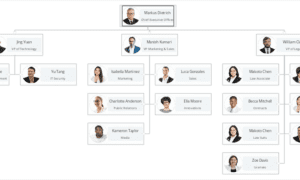Learn how to start trading investment plan? You’ll get guidance on which market to trade, when to take gains, when to reduce your losses, and where further possibilities may emerge if you have a good strategy.
What is Meant by Trading Plan?
A trading strategy is a complete tool for making trading decisions. It assists you in deciding when, what, and how much to trade. A trading strategy should be your own, personal plan – you may use someone else’s plan as a guideline, but keep in mind that someone else’s risk tolerance and available money may be significantly different from yours.
Your trading strategy might contain whatever you think would be valuable, but it should always include the following:
- Your trading motives
- The amount of time you want to devote
- Your trading objectives
- Your risk-taking mindset
- Your trading capital accessible
- Rules for personal risk management
- The marketplaces in which you want to trade
A trading plan differs from a trading strategy in that it specifies how you should enter and exit transactions.
How to Create an Effective Trading Plan?
When making a strong trading strategy, there are seven simple steps to take:
Outline Your Motivation
Identifying your trading purpose and the amount of time you’re ready to spend is a critical stage in developing your trading strategy. Ask yourself why do you want to be an effective trader, and then put out your goals for trading and you should trade with a top forex broker.
Determine how much time you can devote to trading.
Determine how much time you can devote to your trading operations. Could you trade while working, or must you handle your transactions early in the mornings or night time? It’s also critical to devote adequate time to trade preparation, that includes schooling, practicing your tactics, and monitoring the markets.
Define your goals
Any trading objective should be detailed, quantifiable, realistic, relevant, and time-bound, not simply a simple remark (SMART). ‘I hope to grow the value of my whole portfolio by 15% in the next 12 months,’ for example. This objective is SMART because the numbers are explicit, you can assess your performance, it’s reachable, it’s about trading, and it has a time range.
Select a risk-to-reward ratio
Before you begin trading, determine how much loss you are willing to accept both for individual transactions and for your overall trading strategy. It is critical to establish your risk tolerance. Market values are constantly fluctuating, and even the safest financial assets are not without danger. Some beginner traders choose to take a lesser risk to test the waters, while others prefer to take a higher risk in the hopes of generating bigger gains – the choice is entirely yours.
See your capital
Consider how much capital you can afford to invest in trading. You should not ever put more money at danger than you can afford to lose. Trading is fraught with danger, and you might probably lose all of your trading cash.
Assess market knowledge
The market in which you wish to trade will have an impact on the specifics of your trading strategy. This is due to the fact that a forex trading strategy will vary from a stock trading plan.
Start a diary
A trading diary is required to support a trading strategy in order for it to be effective. You should keep a trading journal to track your deals so you can see what works and what doesn’t.

































